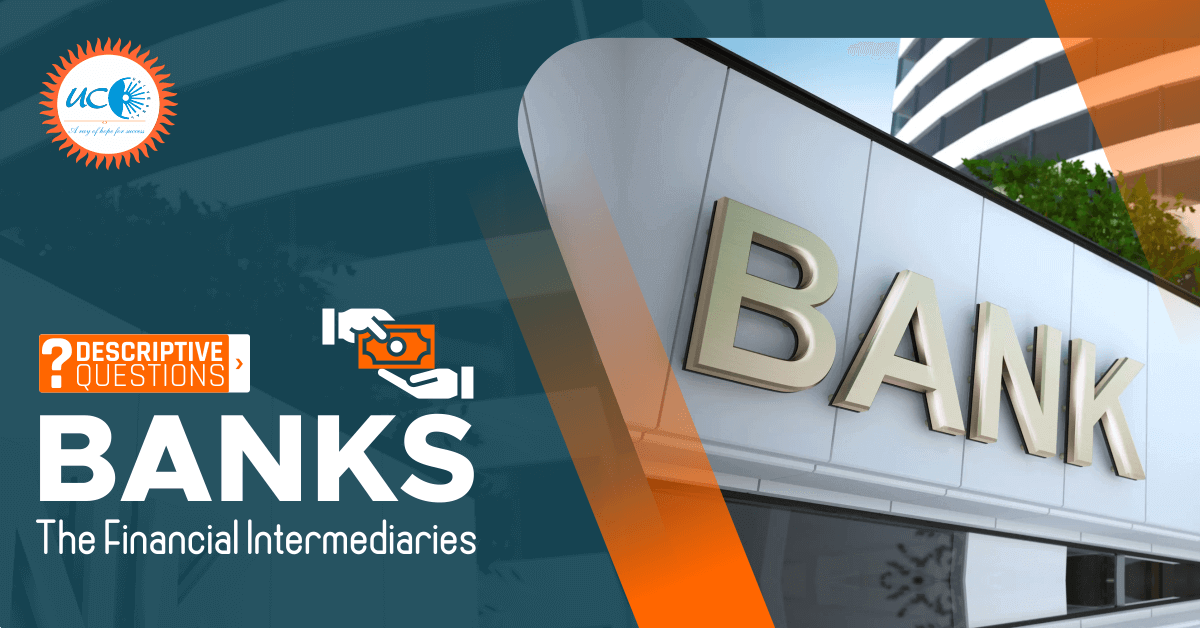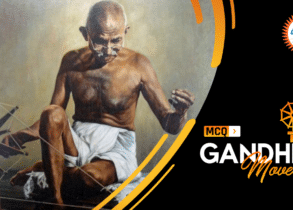Economics – Descriptive questions on banking
1.“Banks are financial intermediaries”. Explain?
A bank is a financial institution which deals with deposits and advances and other related services. It receives money from those who want to save in the form of deposits and it lends money to those who need it. Banking is one of the most essential and important parts of human life. In the current faster lifestyle peoples may not do proper transitions without developing the proper bank network. The Banking System in India is dominated by nationalized banks.
Primarily, banks offer two kinds of deposit accounts. These are demand deposits like current/saving accounts and term deposits like fixed or recurring deposits. When you open a deposit account in a bank, you become an account holder or a depositor. Saving accounts are used to meet daily on-demand requirements of cash. The deposit rates on saving accounts keep changing based on RBI’s revision of policy rates. Banks offer lower interest rates on saving account as compared to term deposits. It is because of this reason, investors opt for term deposit accounts.
A term deposit account is used to hold money for a fixed period of time. In return for this, the bank pays interest on the term deposits. However, you are not allowed to withdraw your money before the expiry of the term but the money will be withdrawn by cutting down the actual interest.
It generates interest by giving loans to agriculture, corporate and industrial sectors, etc.
The performance of the banking sector is more closely linked to the economy than perhaps that of any other sector. The growth of the Indian economy is estimated to have slowed down significantly. The economic slowdown and global developments have affected the banking sectors’ performance in India in FY12 resulting in moderate business growth.
2. Explain in detail the types of banks?
Banks play a vital role in the field of socio-economic development. It increases efficiency by mobilizing savings and allocating them to higher-return investments.
There are two types of Banks, Institutional and non-institutional banks.
Institutional Banks:
When the British entered India the institutional banks were developed. The first formal bank of India is Hindustan Bank of India. Which was officially controlled by the British. But the customers were not the local Indians, only the British and the landlords. Later, Indians started developing banks under the permission of the Companies Act.
Royal commission Indian currency (Hilton Young commission) recommends the establishment of a central bank to be called the “Reserve bank of India”. In 1931, the Indian Central Banking Enquiry Committee revives the issue of the establishment of the RBI as the central bank of India. Later, RBI Act, 1934 constitutes the statutory basis on which the bank is established. Now, RBI is the sole authority to control all other banking institutions in India.
Non-Institutional Banking:
During the ancient period, the banking system was informal in nature. Mainly, run by money lenders and landlords. There is no organization that supervises the credit activities of lenders in the informal sector. They can lend at whatever interest rate they choose.
They give loans to farmers with high interest and no proper records. Even today we come across ‘chit funds’, this also belongs to the informal banking system. Sarada Chit Fund case, Rose valley, Response group, Basil international, I – Core, IMA scam, etc., is the example for this.
85% of poor households, 53% of households with few assets depend on the informal institution rather than formal banks. Thus, it is necessary for formal institutions to increase their lending, especially in the rural sector so that the dependency on informal sources of credit will reduce drastically.
3. Explain in detail the evolution of Money?
Money has always been important to people and to the economy. Many economists, like Keynes, have dealt with the question of money already. The forms money has taken on over centuries have always been closely connected with the technological developments in the economy. First, the transaction started with the barter system. Due to the double coincidence of want, high transaction cost, the usage of the barter system reduced and give way for the commodity as money but due to perishable goods, it also didn’t last long.
Later, metallic money introduced by traders and kings, we have historical evidence of King Kanishka, Guptas, and Tughlaq dynasties issued gold, silver, and copper coins and were used in the ancient period for transaction and trading purposes. It was difficult to carry huge metal coins its usage starts declining and gives pay for paper money which was introduced in the 15th century, we use even today in the form of cash.
Later, Bank money like DD, Cheque, NEFT, RTGS, and IMPS was introduced for easy transactions. The Cryptocurrency released in 2009 by the pseudonymous Satoshi Nakamoto, quickly became the standard for virtual currencies. Virtual currencies have no physical coinage. The appeal of virtual currency is it offers the promise of lower transaction fees than traditional online payment mechanisms, and virtual currencies are operated by a decentralized authority.
The history of currency has made an attempt to explain that the currencies have been used for trading. The development and emergence of various currencies have made the transactions easy. The development of PCs, versatile use has upgraded the development of electronic exchange for which individuals will be less ready to pay charges. They will be expecting for recently imagined, bring down cost approaches to execute with money electronically. Regardless of the disadvantage of utilizing electronic exchange, paper money always has an inducement among individuals.
4. Do you think promoting digital payment by the government is a very effective way to stop the illegal transactions in India? Justify
The “Digital India” is the Indian Government’s flagship programme with a vision to convert India into a digitally empowered country. “Faceless, Paperless, Cashless” is one of the supposed functions of Digital India. As part of government reforms, Prime Minister Sri Narendra Modi demonetized the high-value currency of Rs 500 and 1000 in November 2016 and also launched the “Digital India” initiative in 2015. These initiatives have provided an extensive boost up to the digital payment system in the country. The government’s other initiatives like BHIM and UPI are supporting in transition and faster adoption of digital payments
E-payment systems are important mechanisms used by individuals and organizations as a secure and convenient way of making payments over the internet and at the same time a gateway to technological advancement in the field of the world economy.
Post demonetization is effecting the e-commerce sector that Cash on Delivery is gradually getting stopped and other modes of payment are replaced like Card on Delivery, Net Banking, Debit Card, Credit Card, etc. Demonetization will positively help out e-commerce industry in India enhances the chance for people to go cashless.
It is a very effective payment method to control illegal transactions, because of
• Its transparency and security in the transaction
• Greater accountability of the transaction will aid to curb black money.
• Digital payment facilitates to track the source of transaction
• In order to transfer money they can pay anytime and anywhere through digital payment. Customers no longer need to carry cash or visit an ATM
• The digital payment stored in database so it is easy for the customers to easily access payment information.
Businesses tend to move toward making the lives of customers easier and more convenient. Today, through continuous innovation and technology consumers can purchase nearly anything from almost anywhere across the globe. We cannot say, we completely eliminate illegal transactions through digital payment but competitively can be drastically reduced.





